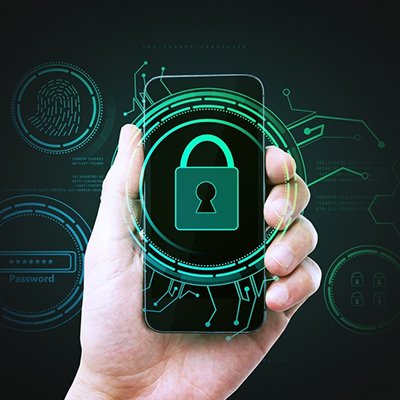 With the safety of students a primary concern at schools across the United States, administrators are faced with the task of finding security tools that fit within their ever-thinning budgets while helping them increase efficiencies. At Charlotte Country Day School in Charlotte, N.C., information systems personnel enhanced the school's security, increased efficiencies and provided a platform for further technological sophistication in the years ahead simply by upgrading the school's personal ID card system.
With the safety of students a primary concern at schools across the United States, administrators are faced with the task of finding security tools that fit within their ever-thinning budgets while helping them increase efficiencies. At Charlotte Country Day School in Charlotte, N.C., information systems personnel enhanced the school's security, increased efficiencies and provided a platform for further technological sophistication in the years ahead simply by upgrading the school's personal ID card system.
"Initially, we produced cards with a laser printer and then laminated them inside a plastic envelope," said John Burke, manager of information systems for Charlotte Country Day, the oldest and largest independent, co-educational college preparatory school in North Carolina and the eighth largest in the United States. "This took an enormous amount of time, and our cards did not look as professional as we would have liked. They also were not as durable, especially if they accidentally went through the wash."
Since June of 2002, the school has been using a Fargo Direct to Card Printer with magnetic stripe encoder to print PVC photo ID cards. Today, everyone on the campus of Charlotte Country Day is required to wear one of the new identification badges. Students, faculty and staff carry two-sided photo ID cards. Visitors wear badges pre-printed with a generic school photo and the word "visitor." To add to the visual security, ID cards are color-coded so wearers can easily be identified from a distance. Student cards are yellow, faculty cards are green, staff cards are blue, and visitor cards are red. Charlotte Country Day also provides a second card to students who ride the bus. These cards, color-coded by bus route, enable drivers to see from a distance that children are getting on the correct bus.
Charlotte Country Day supplies cards for its 1,600 students and 400 faculty and staff with just one printer but operates a remote, networked system on a second campus, four miles away. Here staff members can enter new card holder data, take pictures and send an e-mail request to the main campus, where the actual cards are printed. "We print between 2,000 and 3,000 ID cards a year," said Burke. "We're dealing with students, who tend to lose things, so we print quite a few replacements." The school charges students $5 per card for replacements to cover administrative and supplies costs.
Along with the Fargo printer, the system used at Charlotte Country Day includes photo ID badging software that captures new photos and transfers them into a database. Rounding out the system is a digital camera connected to a small computer system on each campus.
The photo ID system is housed in the information systems department office. "Our operators had no trouble at all learning the system," Burke said. "There was a very small learning curve. It simply was not an issue. It was basically just plug and chug."
 Recycling photos
Recycling photos
To save time and expense, Charlotte Country Day uses student and faculty yearbook photos from the prior year for the ID cards. "Because the system uses MS Access database files, we are able to massage our yearbook pictures into a format we can dump into the system without too much trouble," said Burke. "We receive copies of the photos on a CD from the photographer. Without this process, we would be doing nothing but taking pictures for two to three weeks."
Moving data from different sources into the system requires a certain computer competency. In the case of Charlotte Country Day, pictures received from the yearbook photographer are re-sized, so a script has to be run. "The import process isn't always direct," added Burke, "so it might be helpful to work with your supplier to have it set up the first time."
There is a downside to Charlotte Country Day's system, however. Some students change dramatically in appearance during the 11 months between the time the photos are taken and the first day of the next school year. "It's a problem, I'll agree," said Burke, "but we have to have a photo ID starting on day one, and we have chosen not to re-take photos unless it's a real issue for a student. It starts us down a slippery slope."
Doing the homework
Before the school selected a new ID card printing system, information systems personnel did their homework. They looked at what other private schools were doing, and they went online to learn about the various ID systems on the market. "After looking at various options, I realized that the Fargo printer seemed to be the de facto standard because of its price and performance," said Burke.
Burke never had a problem justifying the purchase. "Basically, this was an information systems decision," he said. "We knew we needed better identification cards. We knew we needed bar codes. Our administrators said, ‘Make it happen,' and so we did." Even finding dollars to pay for the purchase wasn't an issue. Funding for the hardware came out of the security cost center. "Upgrading to a more professional-looking card and one that was more easily spotted from a distance was security reason enough to fund this system," Burke said.
Several printer features were especially important to Burke and his colleagues. "We were counting on the reliability factor," he said, "but we also wanted the ability to print on both sides of the card, and we wanted to design the card ourselves, using our own graphic image rather than something generic." Burke liked the fact that the Fargo printer could print edge-to-edge for bright, colorful cards capable of being seen from a distance. "If schools are doing their own card design, it may be helpful to have someone involved who is experienced with graphics," he added. "Our supplier gave us some sample layouts that helped us get started."
Patricia Cosmo, general manager of Integrated ID Systems, Inc., the Fargo Solutions Provider who sold Burke the printer and software, said, "It was a pleasure to work with someone as computer savvy as John. I could tell he had done his research. His questions were well planned, and he knew exactly what he wanted. We were able to design a system configuration that would successfully meet the school's immediate and future needs."
 Preparing for the future
Preparing for the future
Currently, a bar code on the back of the student, faculty and staff cards enables users to scan the cards in the school's bookstore, cafeteria and library to charge purchases and speed the checkout process. Standard bar code scanners allow for quick student identification retrieval. Charges are then entered into point-of-sale software for export into accounting software at the end of the month. Cafeteria and bookstore charges appear on monthly statements sent to parents by the business office.
According to Burke, having the ability to add magnetic encoding was an important feature although the school has not yet implemented it. When it does, perhaps in the next year or two, it will upgrade from an optical scanning system to a magnetic reader, especially to track staff access to buildings.
Heightened security awareness since 9/11 and recent security breaches at schools across the country made the decision to implement a new system at Charlotte Country Day very easy, according to Burke. Charlotte Country Day prides itself on being a place where young people become critical thinkers and problem solvers. In the case of identification cards, administrators led the way by doing their homework, evaluating options and making an informed decision.


